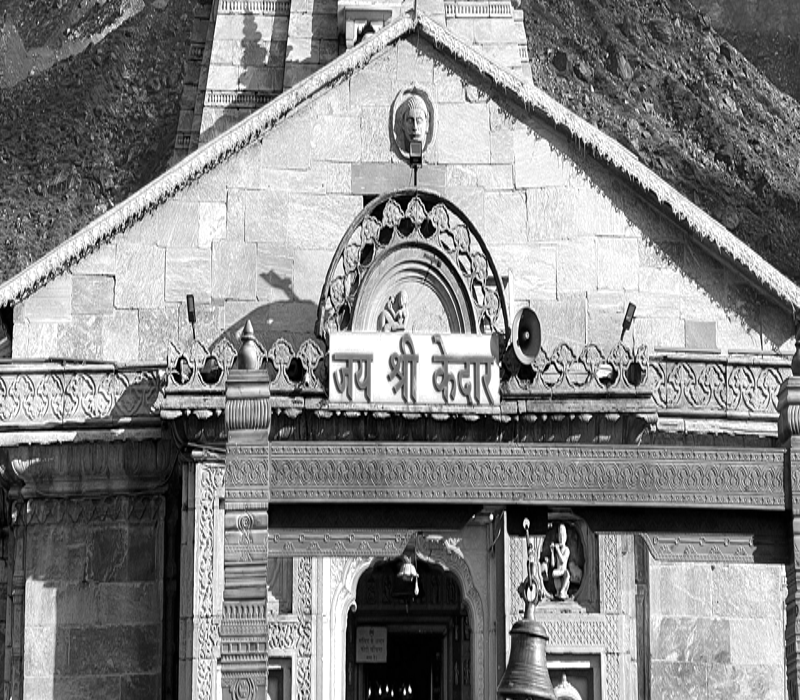- Offices: Dehradun | Dwarka New Delhi
Joshimath, a scenic and spiritually significant town nestled in the Chamoli district of Uttarakhand, India, is often referred to as the "Gateway to the Garhwal Himalayas." Situated at an altitude of around 1,890 meters (6,200 feet), this picturesque destination serves as a crucial base for pilgrims embarking on the sacred Char Dham Yatra and those seeking adventure and tranquility in the lap of the majestic Himalayas.
In this article, we embark on a journey to explore the historical and religious significance of Joshimath, its natural beauty and breathtaking surroundings, the spiritual experiences it offers to pilgrims, the nearby attractions, and the accessibility of this enchanting town.
Historical and Religious Significance:
Joshimath holds a rich historical and religious heritage, dating back to ancient times. The town is closely associated with Adi Shankaracharya, the renowned Hindu philosopher and theologian who established one of the four mathas (monasteries) in the four corners of India. The Jyotirmath, one of these four mathas, is located in Joshimath and is considered an important center of religious learning and pilgrimage.
The town's religious significance is further enhanced by its role as an essential stopover on the Char Dham Yatra route. Pilgrims heading to Badrinath, one of the four prominent pilgrimage sites, often take a halt at Joshimath to rest and acclimatize to the higher altitudes before continuing their spiritual journey.
Additionally, Joshimath is known for the Kalpavriksha, a sacred tree believed to be more than 1,200 years old. According to local legends, Adi Shankaracharya meditated under this ancient tree.
The Spiritual Experience:
Visiting Joshimath offers a unique spiritual experience, with its serene atmosphere and close proximity to several revered temples and shrines. The town is enshrined with an aura of divinity and provides a perfect setting for introspection and meditation.
The Narsingh Temple, dedicated to Lord Vishnu in his half-man, half-lion form, is a prominent place of worship in Joshimath. It is believed that the idol of Lord Narsingh in this temple was installed by Adi Shankaracharya himself to protect the region from natural calamities.
The Vasudeva Temple, another significant temple in Joshimath, is devoted to Lord Krishna. Its architecture and intricate carvings showcase the rich cultural heritage of the region.
The Auli Ropeway, which connects Joshimath to the picturesque hill station of Auli, offers panoramic views of the surrounding snow-capped peaks and lush greenery, providing a sense of awe and reverence for nature's wonders.
The pilgrimage season, typically from May to October, witnesses an influx of devotees who come to Joshimath to seek blessings, participate in religious ceremonies, and partake in the vibrant festivals celebrated here.
Nearby Attractions:
Joshimath is surrounded by several enchanting attractions that enthrall tourists and nature lovers alike.
Auli: Often referred to as the "Skiing Capital of India," Auli is a paradise for adventure enthusiasts. During the winter season, it transforms into a snowy wonderland, attracting skiers from across the country and beyond. In the summer, it offers panoramic views of the surrounding peaks and meadows.
Valley of Flowers National Park: A UNESCO World Heritage Site, the Valley of Flowers is a breathtaking meadow blooming with a variety of vibrant and rare Himalayan flowers. It is a haven for nature enthusiasts and trekkers who explore the ethereal beauty of this floral wonderland.
Badrinath: One of the four sacred Char Dham pilgrimage sites, Badrinath is dedicated to Lord Vishnu and is revered by Hindus as a place of spiritual significance and divine blessings. The Badrinath Temple, surrounded by snow-clad peaks, is a major attraction for pilgrims.
Natural Beauty and Accessibility:
Joshimath is surrounded by the surreal beauty of the Garhwal Himalayas, with snow-capped peaks, dense forests, and pristine rivers forming an awe-inspiring landscape. The Nanda Devi peak, one of the highest peaks in India, adds to the majesty of the region.
Reaching Joshimath is relatively convenient. It is well connected by road to major cities like Rishikesh, Haridwar, and Dehradun. The nearest airport is the Jolly Grant Airport in Dehradun, approximately 275 kilometers away. Rishikesh serves as the nearest railway station, around 250 kilometers from Joshimath.
The roads leading to Joshimath are picturesque but can be challenging due to the steep inclines and hairpin bends. It is advisable to plan the journey during the daytime to enjoy the breathtaking views and ensure safety.
The town is accessible throughout the year, except during the winter season when heavy snowfall and landslides may disrupt travel. The pilgrimage season, starting from May and lasting until October, is the best time to visit Joshimath when the weather is more favorable and the surrounding landscapes are at their verdant best.
Conclusion:
Joshimath, with its historical and religious significance, breathtaking natural beauty, and spiritual ambiance, holds a special place in the hearts of pilgrims and travelers alike. The town serves as a gateway to the majestic Garhwal Himalayas and offers a multitude of enriching experiences for those seeking spirituality, adventure, and solace in nature. Whether it is the pilgrimage to sacred temples, the captivating views of the Himalayan peaks, or the soul-stirring tranquility, Joshimath beckons all to embrace the essence of spirituality and immerse themselves in the divine charm of this enchanting destination.

